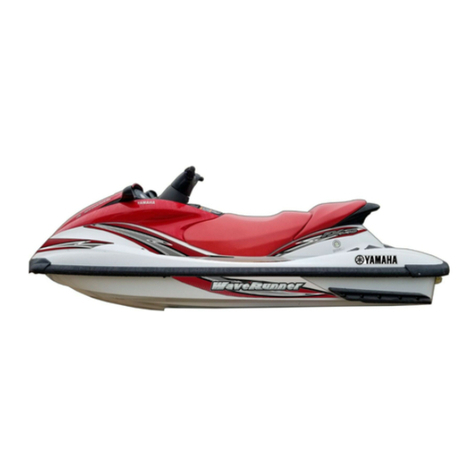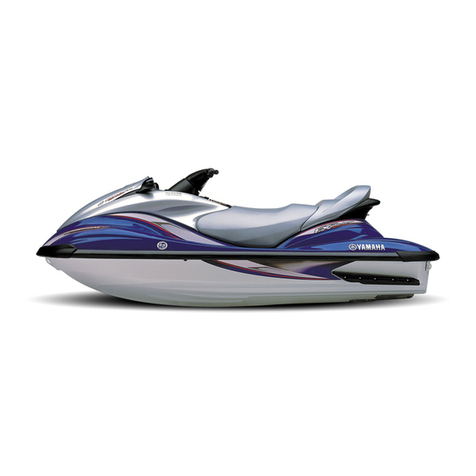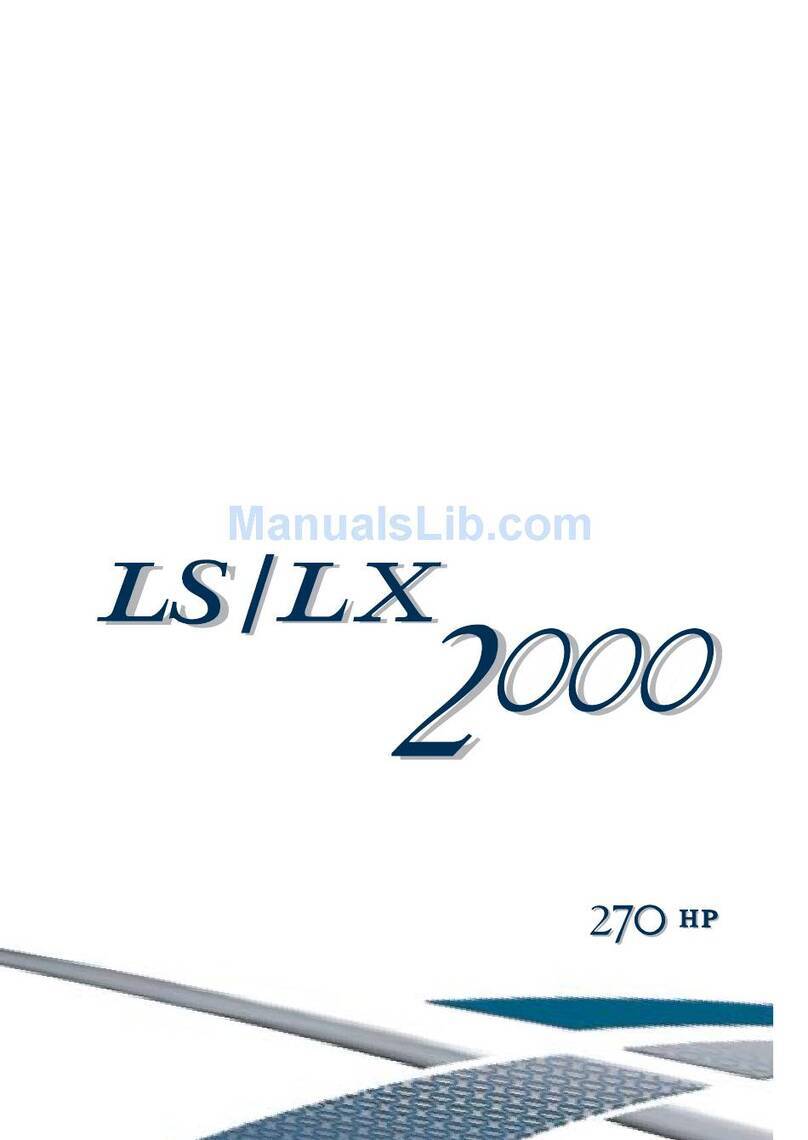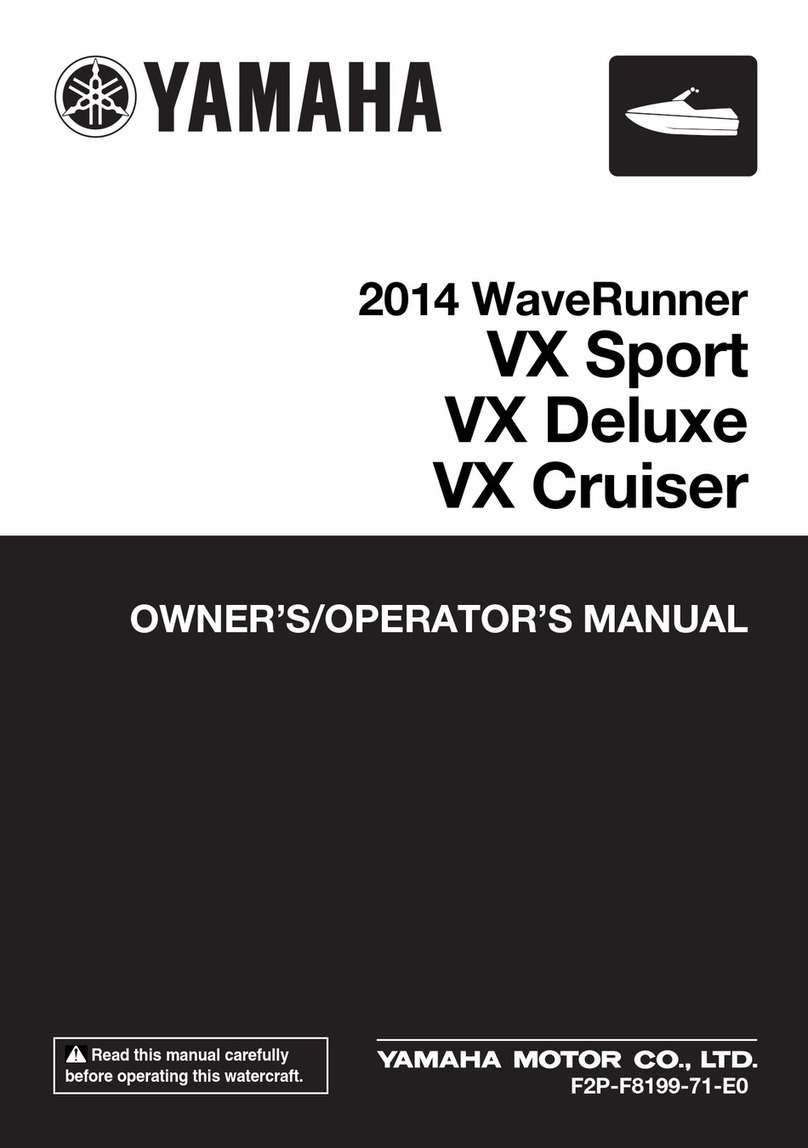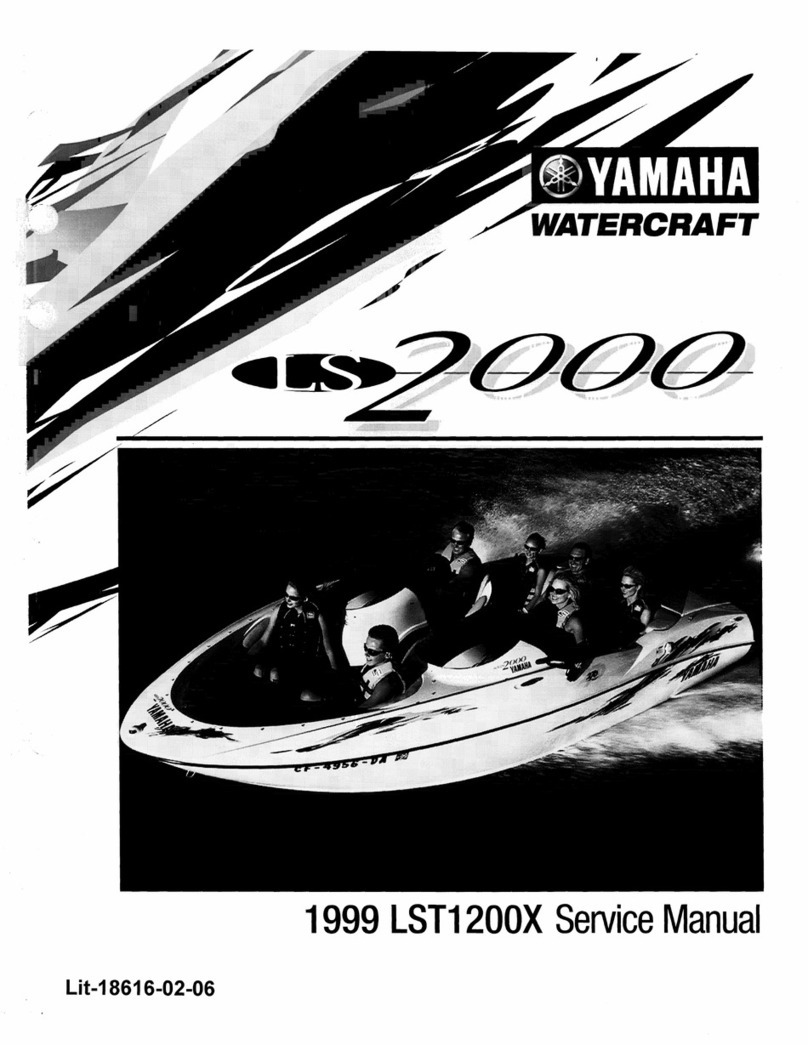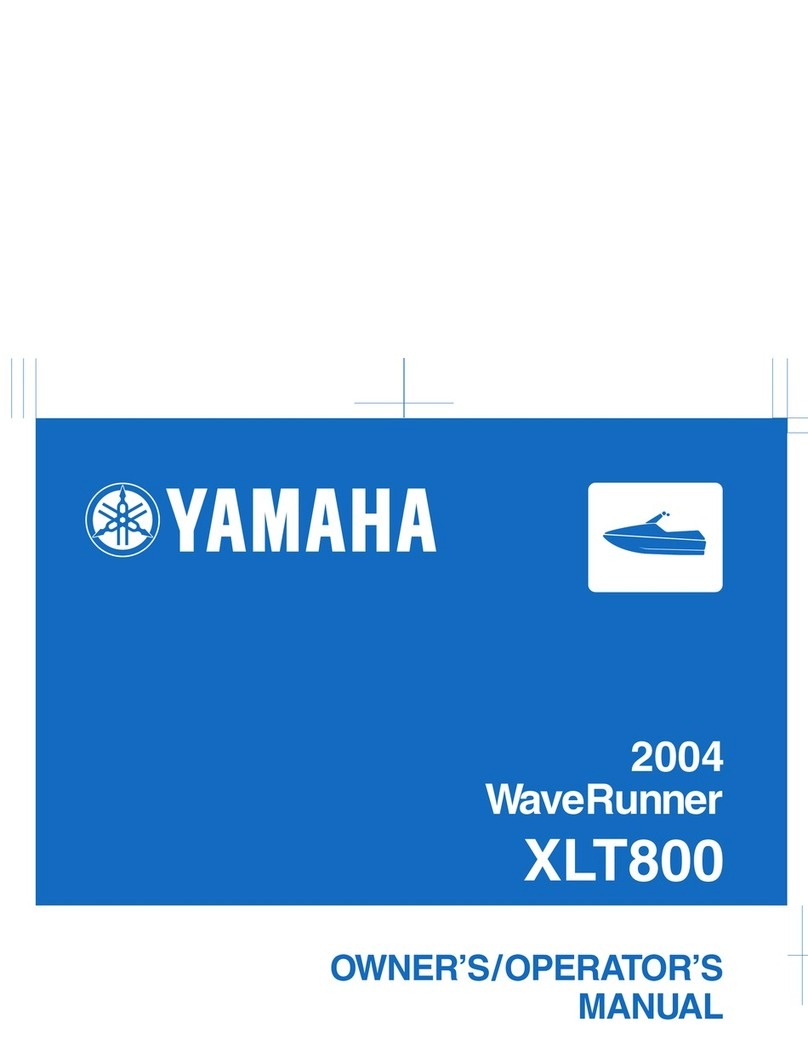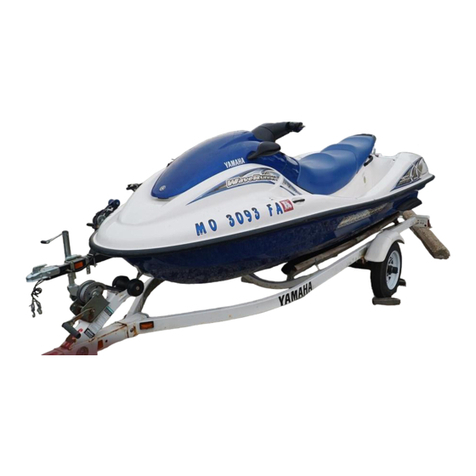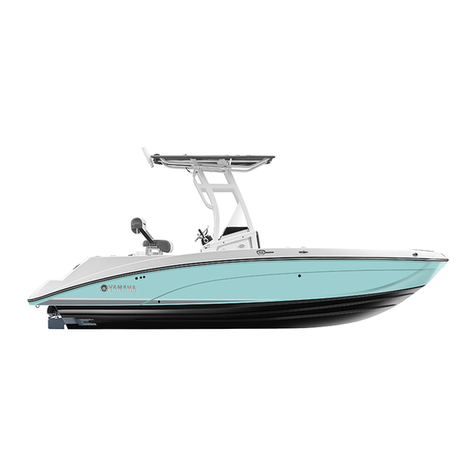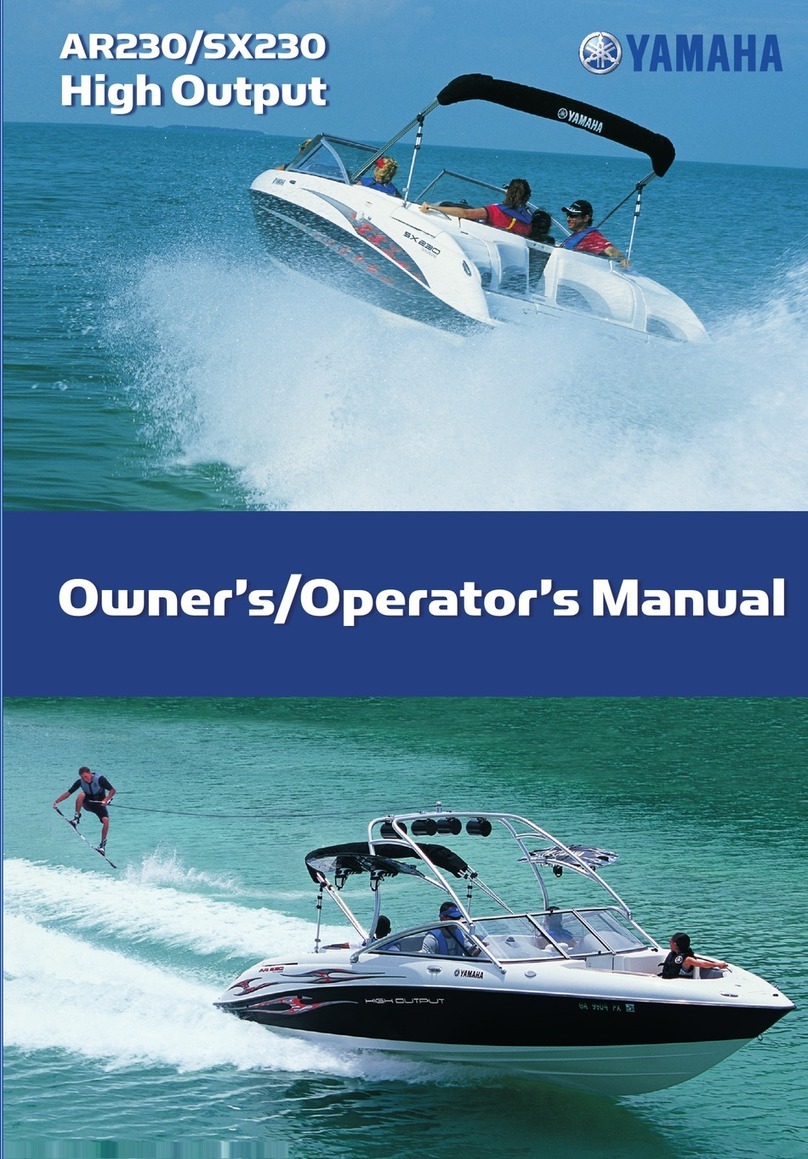
Table of contents
General and important labels........... 1
Identification numbers .................... 1
Primary Identification (PRI-ID)
number............................................ 1
Craft Identification Number (CIN)....... 1
Engine serial number.......................... 1
Manufactured date label .................... 2
Model information ........................... 2
Builder’s plate .................................... 2
Important labels .............................. 4
Warning labels.................................... 5
Other labels ........................................ 8
Safety information........................... 10
Limitations on who may operate
the watercraft ............................. 10
Cruising limitations........................ 11
Operation requirements ................ 12
Recommended equipment ........... 14
Hazard information........................ 15
Watercraft characteristics ............. 15
Wakeboarding and water-skiing ... 17
Safe boating rules ......................... 18
Enjoy your watercraft
responsibly................................. 19
Description....................................... 20
Watercraft glossary ....................... 20
Location of main components ...... 21
Control function operation ............. 25
Watercraft control functions ......... 25
Remote control transmitter .............. 25
Yamaha Security System................. 26
Engine stop switch .......................... 27
Engine shut-off switch .................... 27
Start switch ..................................... 27
Throttle lever .................................... 28
RiDE lever......................................... 28
Steering system ............................... 28
Cooling water pilot outlet ................. 29
Water separator................................ 29
Watercraft operation ...................... 31
Watercraft operation functions ..... 31
Shift system...................................... 31
Electric trim system.......................... 33
Watercraft operation modes ......... 35
Low RPM Mode ............................... 35
Instrument operation ...................... 37
Multifunction information center... 37
Information display........................... 37
Hour meter ....................................... 41
Voltmeter .......................................... 41
Equipment operation ...................... 43
Equipment..................................... 43
Seats ................................................ 43
Handgrip........................................... 44
Reboarding step (VXR) ..................... 44
Bow eye............................................ 45
Stern eyes ........................................ 45
Cleat ................................................. 45
Storage compartments .................... 46
Fire extinguisher holder and cover... 48
Operation and handling
requirements ................................... 50
Fuel requirements ......................... 50
Fuel................................................... 50
Engine oil requirements ................ 52
Engine oil.......................................... 52
Draining the bilge water ................ 54
Draining the bilge water on land....... 54
Draining the bilge water on water .... 54
Transporting on a trailer................ 55
First-time operation ........................ 56
Engine break-in............................. 56
Pre-operation checks..................... 57
Pre-operation checklist .................... 57
Pre-operation check points .......... 59
Pre-launch checks ........................... 59
Post-launch checks.......................... 65
UF2W70E0.book Page 1 Tuesday, December 8, 2015 9:03 AM


